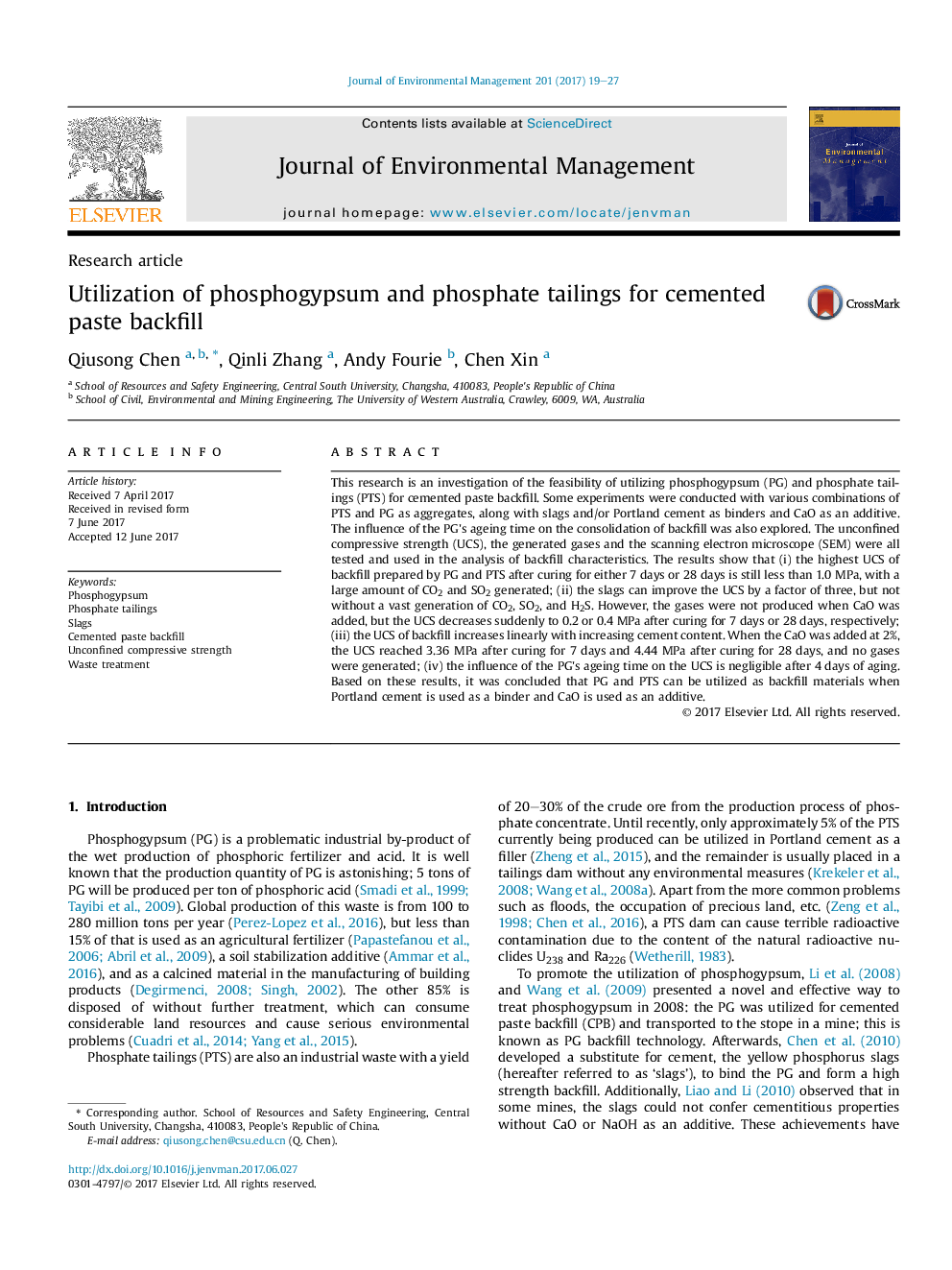| کد مقاله | کد نشریه | سال انتشار | مقاله انگلیسی | نسخه تمام متن |
|---|---|---|---|---|
| 5116555 | 1485216 | 2017 | 9 صفحه PDF | دانلود رایگان |
عنوان انگلیسی مقاله ISI
Utilization of phosphogypsum and phosphate tailings for cemented paste backfill
ترجمه فارسی عنوان
استفاده از کودهای فسفات اسید و فسفات برای ریختن رب سیمان
دانلود مقاله + سفارش ترجمه
دانلود مقاله ISI انگلیسی
رایگان برای ایرانیان
کلمات کلیدی
فسفوگلیپس، دماهای فسفات سرباره، رب ذرات ریز شده، استحکام فشاری نامحدود، درمان ضایعات،
موضوعات مرتبط
مهندسی و علوم پایه
مهندسی انرژی
انرژی های تجدید پذیر، توسعه پایدار و محیط زیست
چکیده انگلیسی
This research is an investigation of the feasibility of utilizing phosphogypsum (PG) and phosphate tailings (PTS) for cemented paste backfill. Some experiments were conducted with various combinations of PTS and PG as aggregates, along with slags and/or Portland cement as binders and CaO as an additive. The influence of the PG's ageing time on the consolidation of backfill was also explored. The unconfined compressive strength (UCS), the generated gases and the scanning electron microscope (SEM) were all tested and used in the analysis of backfill characteristics. The results show that (i) the highest UCS of backfill prepared by PG and PTS after curing for either 7 days or 28 days is still less than 1.0Â MPa, with a large amount of CO2 and SO2 generated; (ii) the slags can improve the UCS by a factor of three, but not without a vast generation of CO2, SO2, and H2S. However, the gases were not produced when CaO was added, but the UCS decreases suddenly to 0.2 or 0.4Â MPa after curing for 7 days or 28 days, respectively; (iii) the UCS of backfill increases linearly with increasing cement content. When the CaO was added at 2%, the UCS reached 3.36Â MPa after curing for 7 days and 4.44Â MPa after curing for 28 days, and no gases were generated; (iv) the influence of the PG's ageing time on the UCS is negligible after 4 days of aging. Based on these results, it was concluded that PG and PTS can be utilized as backfill materials when Portland cement is used as a binder and CaO is used as an additive.
ناشر
Database: Elsevier - ScienceDirect (ساینس دایرکت)
Journal: Journal of Environmental Management - Volume 201, 1 October 2017, Pages 19-27
Journal: Journal of Environmental Management - Volume 201, 1 October 2017, Pages 19-27
نویسندگان
Qiusong Chen, Qinli Zhang, Andy Fourie, Chen Xin,
